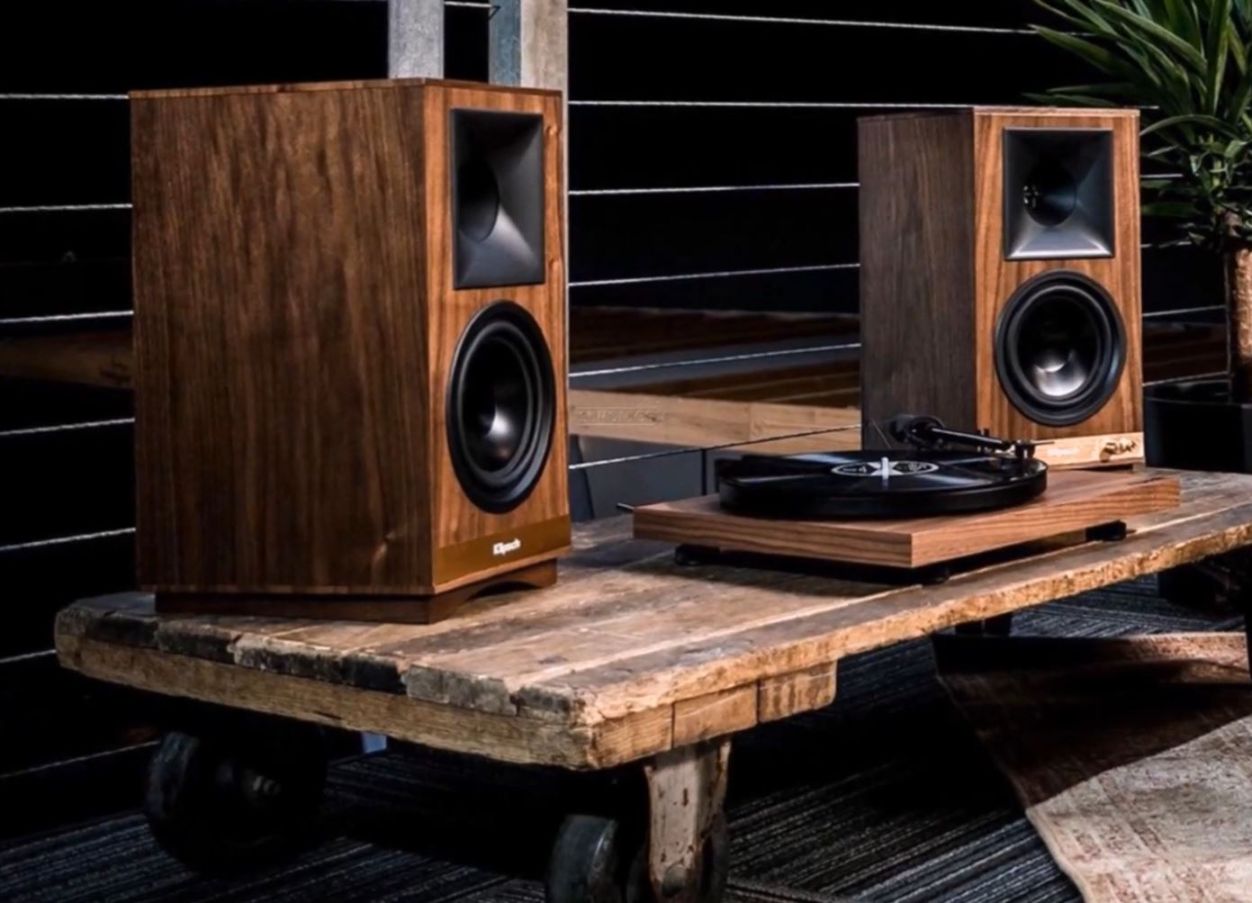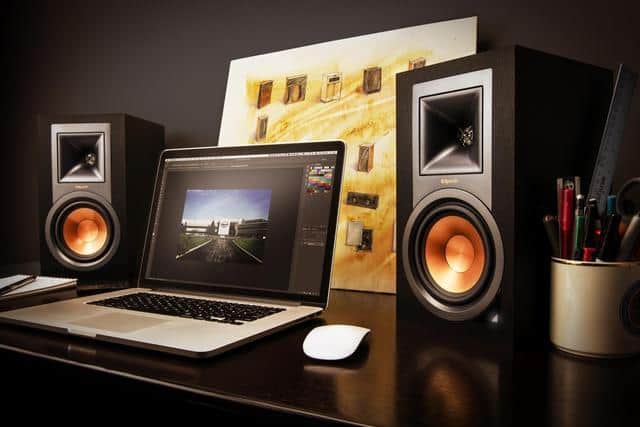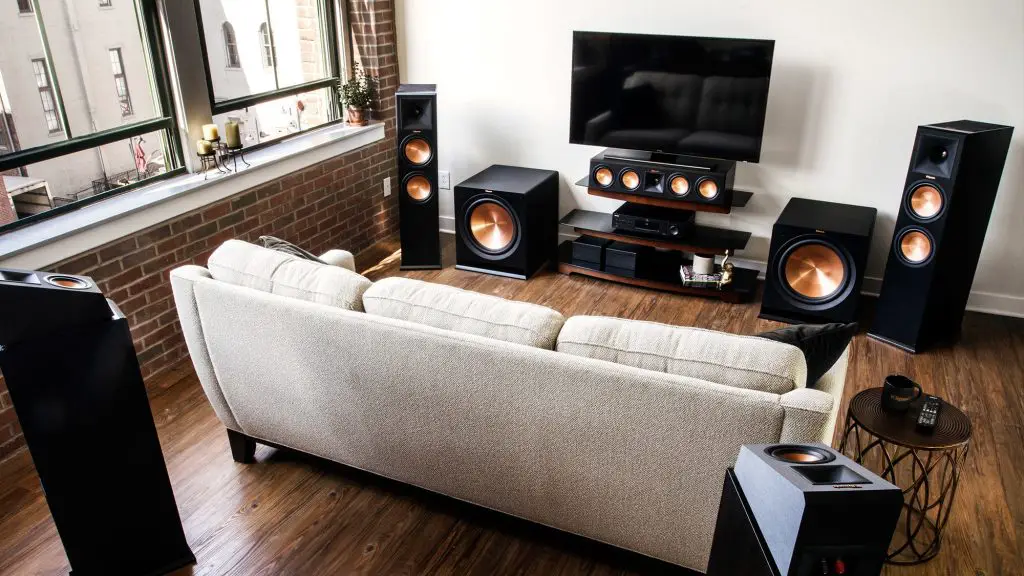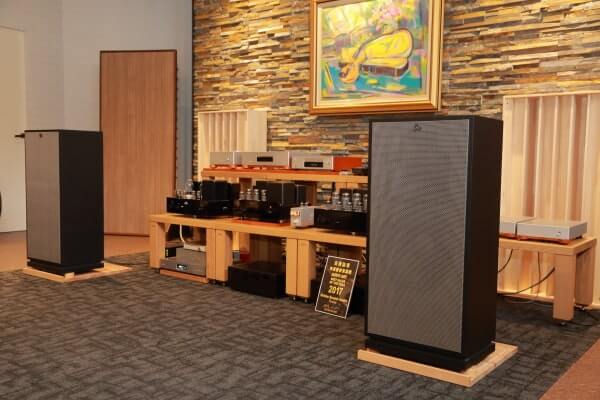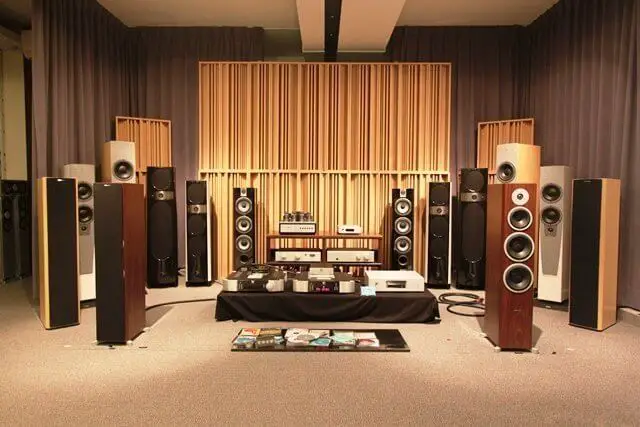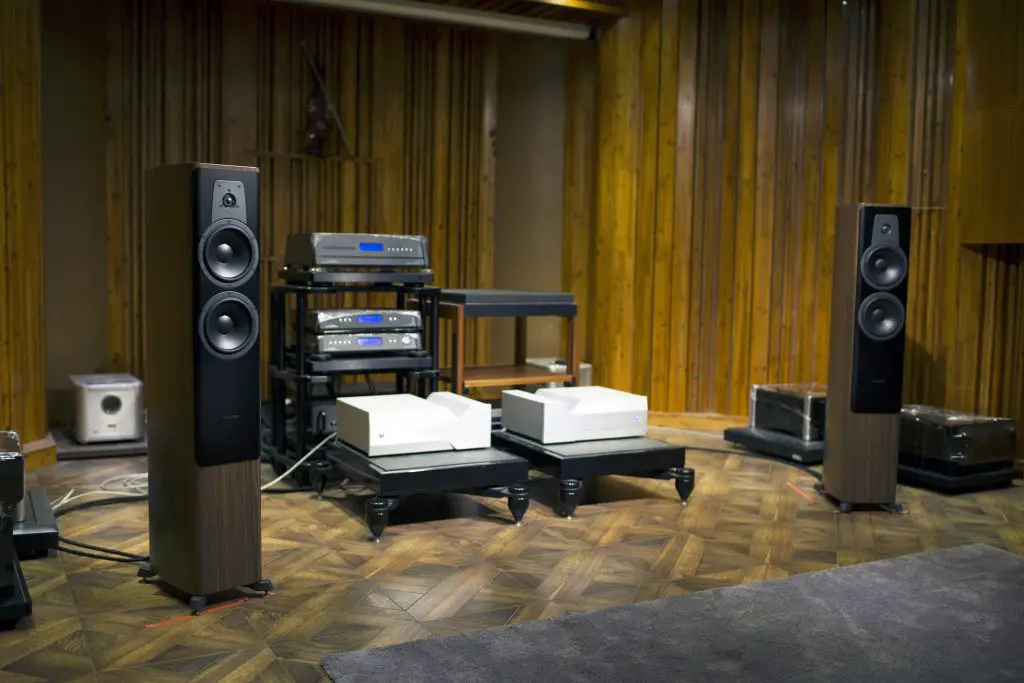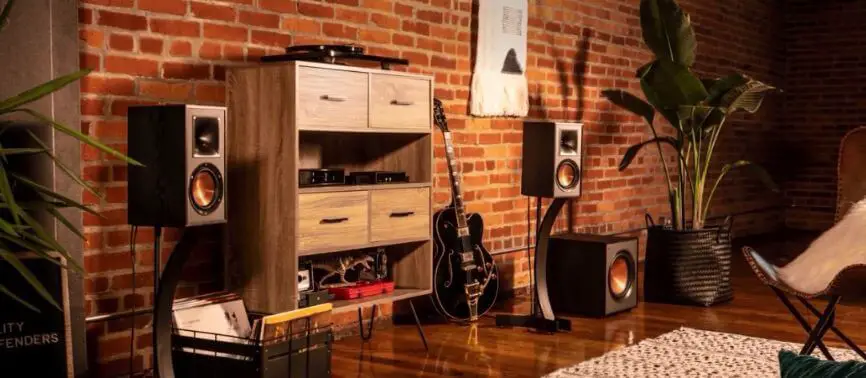How to Position Your Speakers for Great Sound
Location, location, location. No matter what audio equipment you have, proper speaker placement can significantly improve your listening experience. Here are 20 quick tips to help you get the most out of your stereo speakers:
1. Listening Position
If you have a small room, buy small speakers. If your speakers are too large for the space, they will produce sounds that you do not intend to hear. In addition, these sounds will be distorted and may cause damage to your ears or your equipment.
There is still hope if you have created with money on great-sounding speakers only to get them home and find out that they don’t fit in your living room. You can place them against a wall while still being able to sit down comfortably while playing music.
One of the advantages of having rear-ported cabinets is that the sound from the woofer’s back does not reflect against a wall and cancel some frequencies when you stand in front of it. So if your living room allows, you can keep your speakers away from the wall to let low-frequency sound come out unhindered.
In an ideal system, all sounds should be heard exactly as they were recorded. For instance, a bass drum should produce a consistent tone every time it is struck and not only at half volume each time. However, since this cannot be achieved in practice, you need to fine-tune the position of your speakers until the tonal balance seems right to you.
When placing speakers on the floor, be careful not to create a standing wave between your room’s front and the rear. If you are sitting close to your speakers while playing them, this should be less critical.
However, if you are sitting at the other end of your living room or listening while lying down, then you will want to place some form of acoustic treatment in front of the speakers (not necessarily expensive).
The cheapest solution is always moving them somewhere else, but since low-frequency sounds are somewhat directional, they may work fine when placed towards one direction even if they do not sound well when turned towards another.
Carefully read about stereo positioning to see if that is an option for you.If all else fails, try to get away from the speakers entirely and let your ears tell you whether this is a better solution. It may be time to go shopping for some acoustic panels or bass traps if it is. This will allow you to enjoy your sound in many more places within your living room or even your bedroom without compromising the quality.
2. Speaker Position Relative to Each Other
When listening with headphones, some people think that they need audio left and right instead of front and back because their eyes are telling them so. However, this is not necessarily true when listening to sound produced by speakers in your room because it’s still another form of auditory illusion.
Our mind needs some time before it understands the direction from which a new sound is coming. Until then, it will try to make sense of the sound by looking at the position of your speakers relative to each other.
As mentioned above, when you are seated close to your speakers with your eyes closed, your mind may think that the sounds are coming from in front of you. This means that if your speakers are placed close to each other and closer to one side of the room, you should hear them positioned towards that same side.
Otherwise, move them apart until it feels right for you. Note that an equilateral triangle between two speakers and yourself does not exist since there needs to be some space between you and all objects around you.
3. Speaker Position Relative to the Listening Spot
Since we are not living in a perfect world and your room dimensions will not match an equalizer, you should start by placing your speakers roughly in the middle of your room and then fine-tune their positions until they sound right to you.
Ensure that all speakers (subwoofer included) can be heard from one location within your living room. This means avoiding asymmetrical setups. While it is perfectly okay if only bass frequencies cannot be heard from all seats, such distortions should be avoided whenever possible because our hearing adjusts itself when different sounds arrive at other times.
If each frequency reaches our ears with a delay, our brain will try to compensate once again by focusing more on that frequency.
4. What is the best height for speakers?
Given that our rooms are unlikely to be perfectly symmetrical keeping your speakers at similar heights is best. When placing them very close to floor level, you may still hear some of the bass frequencies, but this will only occur when sitting down or even lying down.
As long as you can sit upright without feeling uncomfortable, try keeping your speakers’ height around ear level. Note that low-frequency sounds can travel quite a distance before being absorbed, so if you have two subwoofers in different locations within your room, then place both near ear level for better imaging.
If you find yourself unable to do so, pick one and let its other channel play bass frequencies out of both speakers.
5. Speaker positioning within the room
The most significant mistake people make is to place their speakers along the wall behind them. Instead, speakers should be placed in front or close to your listening spot (ideally less than 1m away).
This reduces early reflections that would otherwise create a mirror image between your two speakers, making it harder for your brain to discern where each sound comes from. Such an arrangement also helps produce a more coherent bass since you’ll hear all sounds at roughly the same time, but only if you are sitting between the speakers instead of behind them.
These boundaries may not always apply, so feel free to experiment until you find what works best.
6. Speaker position relative to nearby objects
Since many objects around your living room will vibrate when bass frequencies are played through your speakers, it is best to avoid placing them close to walls or windows.
If you can’t move a wall, try moving one of your speakers towards it until the sound becomes too muffled and then pull it back a few inches.
7. Side-wall Reflections
When you cannot position your speakers far enough from the wall, use panels instead. These absorb some of the low frequencies that would otherwise bounce back into the room. Note that such arrangements may not always be practical, so do what works best for each situation.
It’s okay if these add some colouration to the overall sound, but don’t overdo it because this will only reduce clarity in general, especially during bass-heavy passages.
8. Speaker positioning within the room
If you have a television near your listening spot, then keep in mind that this will add some extra bass due to its large flat surface and, in the case of plasma TVs, also their built-in speakers.
If you can’t avoid placing your rear speakers close to a TV, then try to aim them towards a wall behind it so that any sound reaching them from the screen is delayed enough for your brain to ignore it.
This way, you won’t hear any echoes every time an explosion happens on TV, but only when everything else sounds like it’s exploding at the same time (so probably not very often). When setting up home theatres with multiple seats, use each speaker’s volume control to balance them out.
9. Speaker positioning concerning corners
When all else fails, placing your speakers close to the nearest wall will solve most of the issues with bass in your room. Try not to put them right in the corner, though, because these spots will contain more bass than other places within a room.
This is because walls are parallel with each other. Hence, they create large reflecting surfaces for soundwaves, making them bounce back and forth several times before being absorbed by some object inside the room (panel, sofa, person etc.) or leaving it altogether through an open door/window.
Placing your speakers right in one of those corners would only increase this effect, but you can still put them closer than usual to the wall behind them until you start hearing too much bass.
10. Speaker positioning concerning your listening position
Try sitting closer instead of moving the speakers when you cannot put your speakers close enough to where you sit. This way, you will be able to hear more details and less bass (due to its slightly weaker impact on further away positions).
If sitting any closer would make it harder for everyone else in the room, then try placing a sound-absorbing panel between yourself and the back of your chair (you may also want one beneath your feet but do not cover up all the panels).
The pane should absorb some high frequencies that can otherwise bounce off your body and create peaks and dips in your perception of the overall sound – this makes it sound unnatural and is also one of the reasons why some people complain about “muddy” bass.
11. Speaker positioning concerning your ears
Making sure that you listen at the correct angle will help your brain process what it hears more easily. If you can, aim each of your speakers towards where your ears are when you sit in front of them (the point between them being exactly halfway towards each).
If this isn’t possible, then listen straight on instead of from an angle. Otherwise, the sound coming out of the speakers would be too strong in specific frequencies (especially mid-range) and weaker in others (exceptionally high ones), which would make music or movies harder to hear.
12. Proper speaker setup
Now that you’re aware of the basics of positioning your speakers, it is time to pick the final spot for them. For example, if you placed small, stand-mounted ones on a large coffee table, then try sitting closer and aim them towards where your ears are instead of listening from a sofa or another piece of furniture because otherwise, some frequencies would be boosted. In contrast, others would be quieter due to their weaker impact from that angle.
In the case of full-size floor-standing models with enough space between two opposite walls, try putting them right in the middle (or slightly closer to one) so they produce sound waves oozing outwards in all directions at once.
13. All speakers should go against the wall
Having speakers placed along all adjacent walls is not as big an issue as it was back when rooms were smaller. However, I still prefer them because they create more equal standing waves with their reflections upon hitting my body or furniture instead of being closer together at one end of the room where bass tends to build up.
Having speakers placed along all adjacent walls is not as big an issue as it was back when rooms were smaller. However, I still prefer them because they create more equal standing waves with their reflections upon hitting my body or furniture instead of being closer together at one end of the room where bass tends to build up.
14. Don’t point all your speakers towards yourself
Place at least one of them in a preferable position and aim the others directly ahead (or right where you sit). It’s easier to make sure that both sides will sound similar if they are facing each other instead of pointing away from you, which causes some frequencies to disappear because they cannot bounce back within the time the brain has set aside for analyzing what was heard.
15. No speakers near corners unless necessary
A small room with only one corner makes it nearly impossible to avoid placing your speakers there, but otherwise, try putting them closer to an adjacent wall or even trying different positions thoroughly – continuously checking if your chosen spot produces better results than another would/does.
16. Virtual surround pops up in different spots
Only two speakers and a subwoofer produce true 5.1 or 7.1 surround – anything else is just an approximation because the majority of people cannot tell where exactly each sound is coming from, so TVs, movies and games show it as supposedly being around you whenever they feel like it (most commonly rear ones).
If your system has only one pair of satellites, then point them towards where your ears are instead of aiming them straight ahead – this will make sure that things sound similar regardless if you stand up or sit down or move around.
17. Beware of standing waves & bass build-up
Once your speaker placement is done, try sitting on the floor between five to fifteen feet away from them and playing a few notes of a song. If you can feel the sound clearly through your butt, then consider moving one or more speakers closer to the wall/s behind them since they probably have been pushed too far into an empty corner or out into an open space which makes it harder for low frequencies to bounce back within enough time so ears can pick up on their direction.
Also, put any object in front of each speaker that tends to suck bass away without being too small so you won’t hear all the rumble whenever something shakes around with fast movements, especially if there’s no action going on at that moment in your movie/game.
18. Tweeters help in surround sound
Larger satellites tend to create a more spacious sound than smaller ones do, and they can also be aimed more efficiently to project soundwaves in different directions towards the front. In contrast, the lowest frequencies are best produced by any speaker placed closer to your ears, usually via a downward-firing one.
19. Woofers are usually at the bottom
Usually, it’s cheaper for manufacturers to put big boxes under speakers instead of letting them surround all sides of what you see with tweeters, but lack of space isn’t always an issue. Hence, most setups have their subwoofers slide against walls or even go right behind furniture where they’ll produce better results because lower-frequency waves will bounce off objects if needed when there aren’t any corners nearby.
20. Position matters for your ears
For speakers, it might be hard to tell whether specific frequencies are pronounced more because of how they sound or where you’re sitting in relation to them.
Still, for headphones, this is different thanks to our asymmetrical ears, which affect the way we perceive things around us at all times. When talking about one-sided headphones like Beats by Dre or any other pair worn on just one ear, there aren’t any rules regarding front and back placement since both sides will deal with certain types of noise equally, no matter which way they face. The best way to test this kind of thing is
Other Tips
1. Turn down the subwoofer volume
One of the biggest mistakes people make is setting their subwoofer levels much higher than other speakers in their system. The reason for this is simple – most small bookshelf or satellite speakers can’t play as low as your main subwoofer.
This is especially true of the cheaper models, which don’t have a lot of bass extension. If you crank up the volume on your sub and turn down the satellite speakers, it’s like putting stress on a whole system that can’t handle it. Furthermore, this results in more distortion and not better bass.
Another thing to remember is that a tiny speaker can’t handle as much power as a subwoofer. If you’d like to hear what the system will sound like, crank up the sub and play something familiar at moderate levels on your other speakers. Remember this when you’re setting up the final level of your audio system.
2. Match speakers that have similar timbres
One mistake people make is mixing and matching different brands and quality levels of speaker cables, resulting in an unbalanced timbre between your front three speakers (two towers, centre channel).
For example, if one set of speakers has soft bass and another boomy bass, or one set has bright treble and another dull treble, it will affect how those speakers sound when played together.
To get good matching, choose your speakers in one brand and model line. You can then run balanced cables and avoid any post-amplification timbre problems.
3. Check your speaker wire with a tone generator
As we mentioned previously, using mismatched cables can result in an unbalanced timbre between speakers, which is the main reason for properly setting up your whole system before you start listening to it.
Most people don’t have test equipment such as an AC voltmeter or dB meter around – but you can do a couple of cheap tests that are not too accurate but will give you some idea about the quality of your wiring. One quick way of doing this is by using a tone generator, the same tool used by many repair people to test speaker connections.
4. Test your wiring with a CD
Another more straightforward way of testing your system for mismatched components is by simultaneously playing a single continuous track on two different speakers or headphone sets. If you playback, say, “Sympathy for the Devil” by the Rolling Stones, you should be able to hear each drumbeat coming from only one set of speakers at any given time (provided that both are turned up loud enough).
This is because it’s mixed in mono. However, if there is a left/right imbalance – where some beats are louder than others – then that speaker cable connection has problems.
5. Don’t put things under your speakers that vibrate quickly
For example, there are many items in most living rooms – coffee tables, bookshelves and entertainment centres – that can vibrate a little bit when speaker cones move back and forth to produce sound waves.
Your speakers might not seem loud enough with these items in place, but you’ll get a better sense of what they’re capable of when you’ve got them where they belong instead of hoping the problem will go away on its own.
6. Keep speaker cables away from power cords and other wires
The best way to do this is to keep all your audio components on one side of the room and keep non-audio related items (like lamps) on the other side.
Since speakers create electromagnetic fields that can distort electronic signals, it’s essential to have them as far apart from each other as possible. You should also avoid running wire near amplifier/receiver inputs, as this can cause low-level distortion.
Related Questions
Should I angle speakers?
Yes. Speakers that fire straight ahead will give you good left-right stereo separation. If one speaker is stuck to your right ear while another is attached to your left ear, it will be easy to hear which is playing. But speakers that fire straight ahead won’t give you good front-back separation. If you close your eyes, you won’t tell where the sound is coming from in the room very well.
When speakers are angled toward your listening position, they’ll provide better front-back separation because you’ll know where in the room the sounds are coming from. That way, when a guitar player strums his strings upfront, for example, you might hear his guitar on your left speaker briefly before he switches to playing behind you.
Why do speakers sound better in a corner?
No, it doesn’t. First, don’t put your speakers in corners. Putting your speakers in a corner can cause problems with low frequencies because sound waves at low frequencies get longer and bounce off the walls.
That causes sounds to be reflected toward you later than they should, which can mess up the timing between when you hear the direct sound from the speaker and when you hear reflections of that sound. To improve matters, it helps to break up the wall’s surface area behind your speakers by putting bookshelves or other items against them before they reach the corner.
